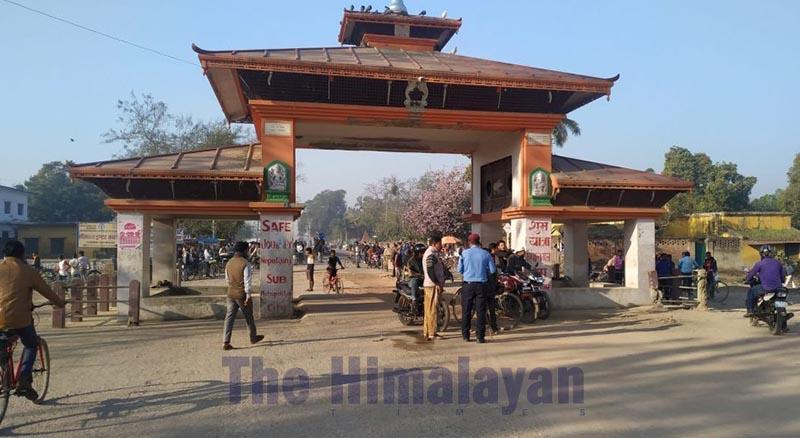Coronavirus cases double in nine days
• Nepal count 134
• Country reports largest single-day surge in cases with 24 testing positive
Kathmandu, May 11
The number of coronavirus cases in the country has more than doubled in the past nine days, triggering calls for adoption of stringent measures to contain the spread of COVID-19.
Nepal reported its first coronavirus case on January 23 after a 32-year-old male student, who had returned from Wuhan, China, tested positive. It took the country two more months to detect the second case on March 23. But within a month the number of cases exceeded 50 and by May 2 the tally rose to 59. Since May 2, the number of coronavirus cases has surged by more than double to 134.
Nepal detected 24 new cases in the last 24 hours, marking the largest single-day surge in the number of cases. Of those infected, 16 are from Kapilvastu district, six from Rupandehi, and one each from Bardiya and Saptari. Of those infected, 23 are males and one is a female.
“The number of cases will further rise in the coming days if stringent measures are not taken to prevent transmission,” said Anup Bastola, consultant tropical medicine at Sukraraj Tropical and Infectious Disease Hospital, Teku, as he called on the government to ‘strictly enforce lockdown in areas with higher number of cases’.
All of those who tested positive in Kapilvastu today are Nepali migrant workers, who had returned from
Maharastra, India 12 days ago. “Eight of them who tested positive in the morning were staying at the quarantine centre in Anirudra Higher Secondary School, Yashodhara, and two others were staying at the quarantine centre in Mahendra Secondary School in Gorusinghe since they arrived in Nepal,” said Chief District Officer of Kapilvastu Dhirgha Narayan Poudel.
“Six others who tested positive later in the evening were also in quarantine in the district. Two of them are from Buddhabhumi Municipality and four are from Yashodhara Rural Municipality,” said Ganesh Nepali Assistant Chief District Officer of Kapilvastu.
Earlier, Kapilvastu — where 1,700 people are residing in quarantine centres — had detected five coronavirus patients. They too were migrant workers who had returned from India.
“Around 2,100 Nepali migrants have now arrived at various Nepal-India border points in the district,” said Poudel. “These people still have not entered Nepal because of the border closure. But many are entering Nepal at night, circumnavigating the border surveillance.”
These people, who are entering the country clandestinely, are posing the biggest threat to Nepal in terms of COVID-19 risk management.
“Nepali migrant workers stranded on Nepal-India border must be allowed to enter Nepal legally. But they should be quarantined for 21 days before they are tested for infection,” said Sujan Marahatta, epidemiologist and public health expert.
It is not only foreign migrant workers but even domestic migrants must remain in quarantine centres once they return to their home districts. But one instance has highlighted the need to practise caution before releasing people who have joined quarantine centres.
An 18-year-old domestic migrant worker, who tested positive today, had joined a quarantine centre after he returned to this home district of Saptari from Chitwan. The resident of Dakneshwori Municipality had arrived in Saptari on April 21 with 13 other migrant workers. He was released from the quarantine centre on Sunday and sent home stating he had tested negative for the disease.
“But today we came to know that he had tested positive,” said Duniya Lal Yadav, chief of Saptari Health Office. The office had apparently released the man without even getting the final report from BP Koirala Institute of Health Sciences, Dharan, which had conducted the test. “This lapse occurred because of miscommunication,” said Yadav.
The person has now been sent to Gajendra Nayaran Hospital for isolation. “Five of his family members are now in quarantine at Kanta Chandra Secondary School,” said Yadav.
A version of this article appears in e-paper on May 12, 2020, of The Himalayan Times.






